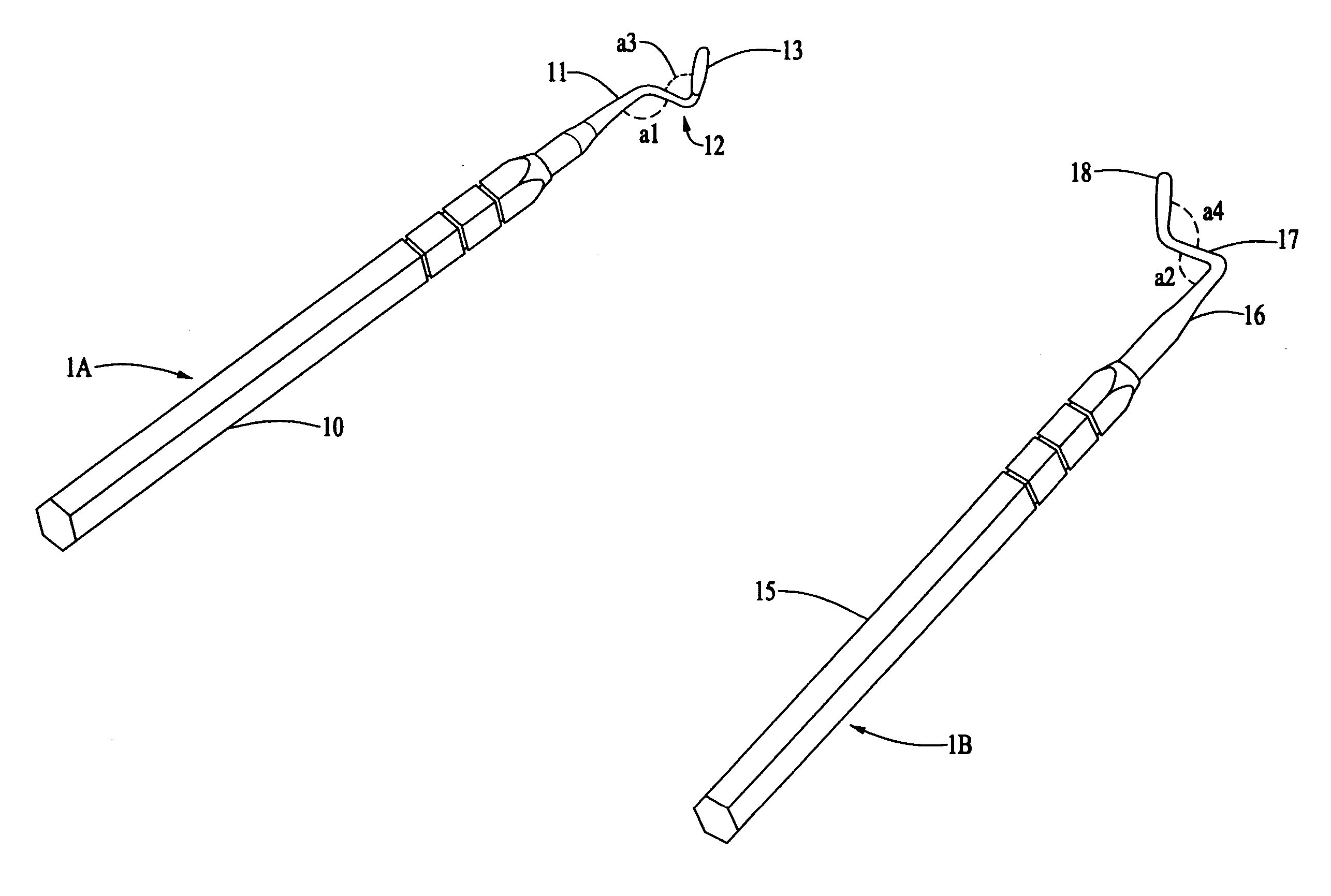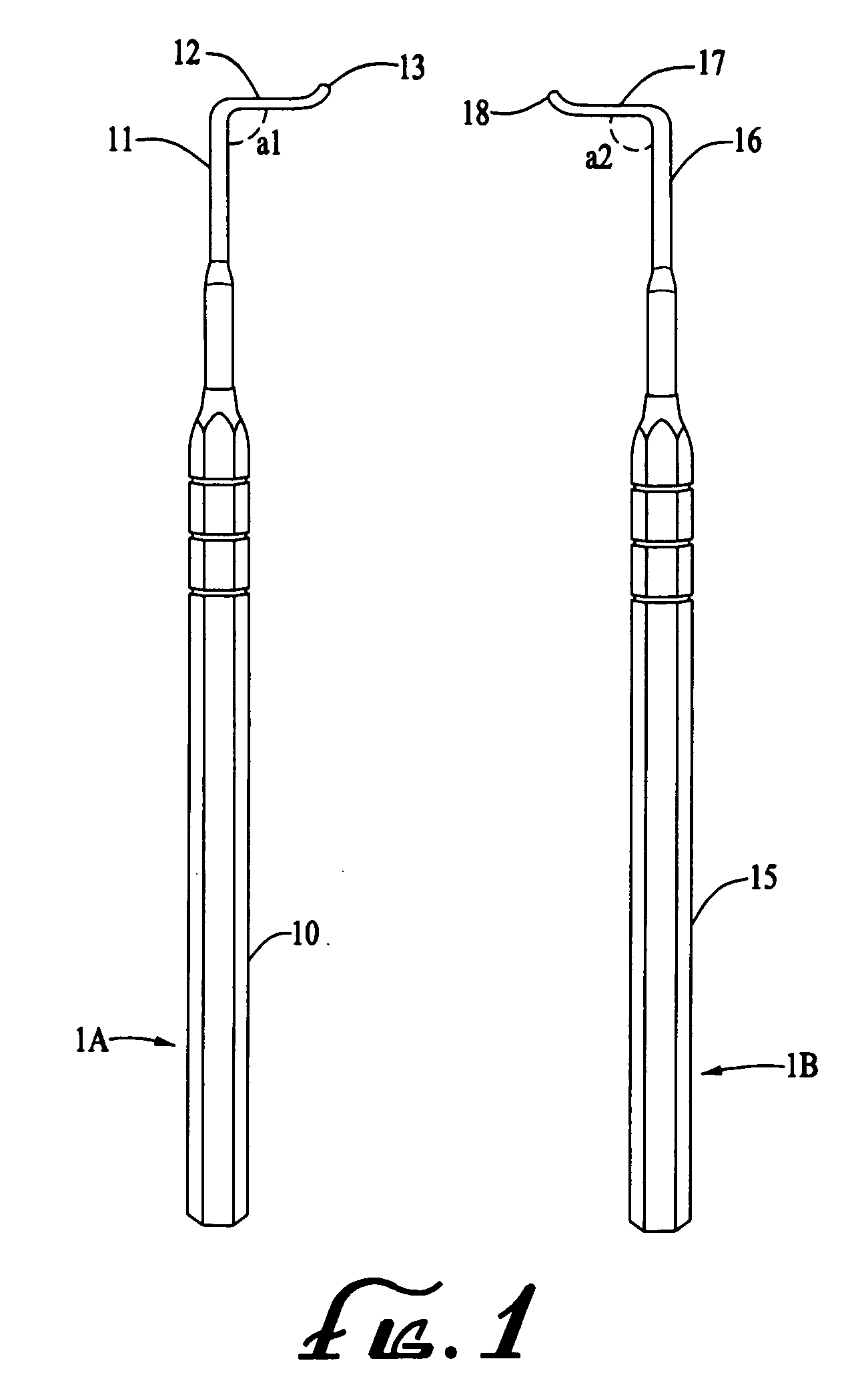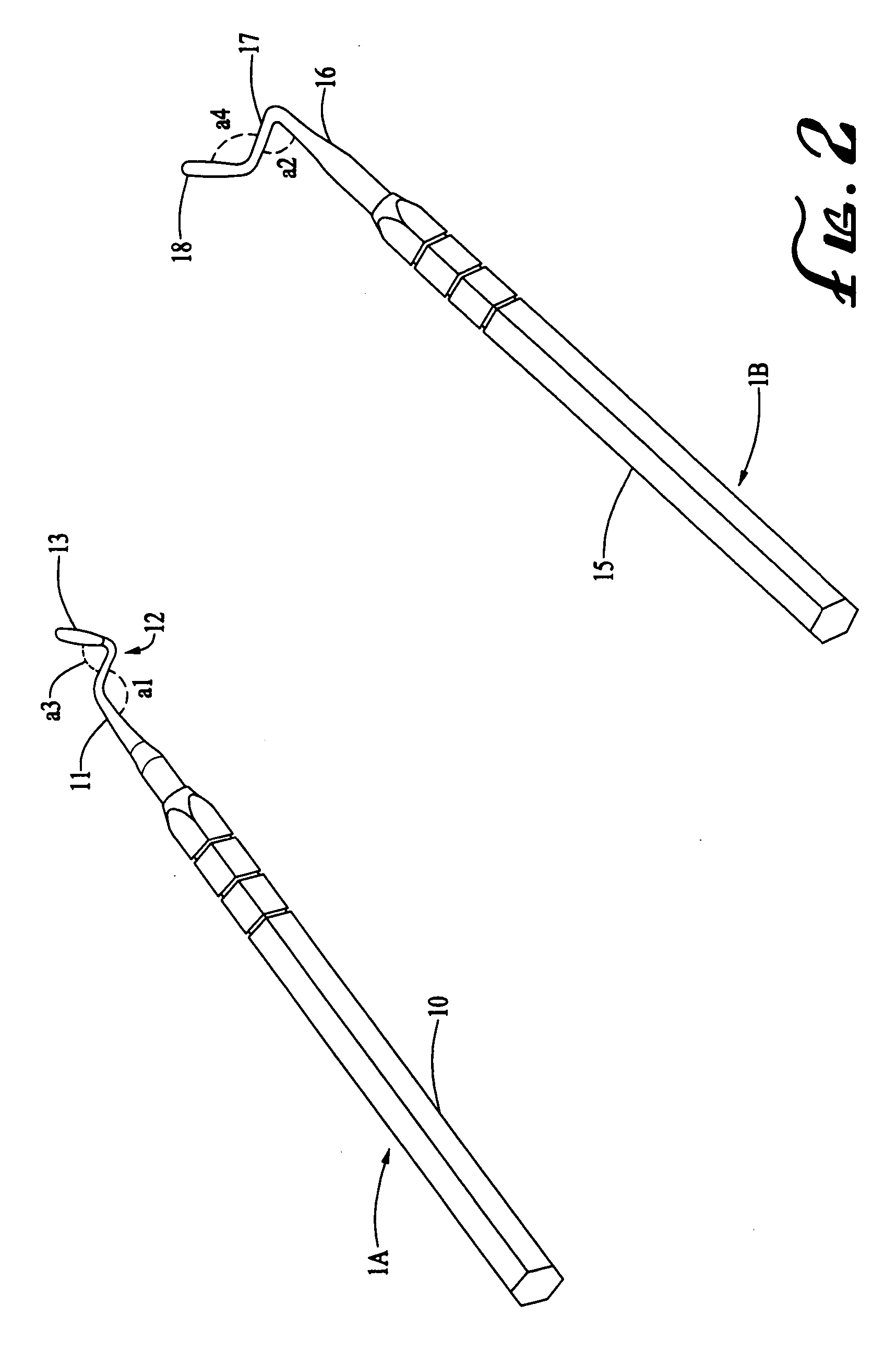Periodontal surgery operation methods and instruments
a periodontal surgery and operation method technology, applied in dental surgery, dental tools, medical science, etc., can solve the problems of complicated surgery with a relatively long recovery time, severe damage to the gum and tooth, and damage to the gum near the root of the tooth, so as to minimize the size of the incision and maximize the efficiency of the operation
- Summary
- Abstract
- Description
- Claims
- Application Information
AI Technical Summary
Benefits of technology
Problems solved by technology
Method used
Image
Examples
Embodiment Construction
[0042] (1) Surgical Techniques for Gingival Augmentation
[0043] The Chao Trans-Mucosal and Papillae Elevation Approach (Chao TMPE approach) is a technique requiring a minimal incision but capable of performing gingival or papillae augmentation at multiple sites. The Chao TMPE approach is a method capable of repairing gingival defects in all four quadrants of the mouth, and is predictably effective for defects up to 7 mm and defects larger than 7 mm in Miller I, II classification of root defects.
[0044]FIG. 15 is a flow-chart illustrating the steps of performing a gingival or papillae augmentation surgery in accordance with the Chao TMPE approach, according to one preferred embodiment. First, as shown by step S01 of FIG. 15, the Chao TMPE approach involves making a horizontal minimal incision of approximately 3-5 millimeters (mm) at or near the fornix (depth of the bucco-muccal fold). This incision can be made using a standard dental surgical instrument such as, but not limited to, a...
PUM
 Login to View More
Login to View More Abstract
Description
Claims
Application Information
 Login to View More
Login to View More - R&D
- Intellectual Property
- Life Sciences
- Materials
- Tech Scout
- Unparalleled Data Quality
- Higher Quality Content
- 60% Fewer Hallucinations
Browse by: Latest US Patents, China's latest patents, Technical Efficacy Thesaurus, Application Domain, Technology Topic, Popular Technical Reports.
© 2025 PatSnap. All rights reserved.Legal|Privacy policy|Modern Slavery Act Transparency Statement|Sitemap|About US| Contact US: help@patsnap.com



